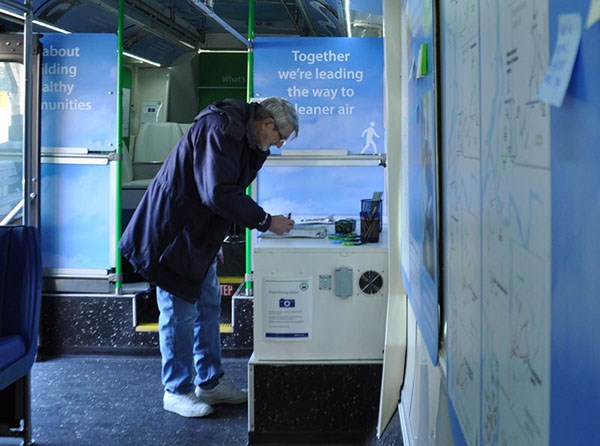It seems there won’t be many more buses or bus routes available in the corridor in the near future, but there may be some new technology aboard existing buses.
At its meeting Tuesday, Squamish council passed a motion to work with BC Transit to implement Automated Vehicle Location (AVL) technology in 2016 in all Squamish buses and that this be referred to the 2016 council budget discussions.
The technology provides real-time information riders can access on their smartphones to discover if their bus is early or late, when the next bus will arrive and if there are any alerts or changes to the schedule. The technology costs between $1,000 to $20,000 per bus – depending on size of AVL device chosen and whether it is leased or purchased – and an average of about $750 per bus to operate annually.
Funding for local transit is shared equally between the province and the District of Squamish.
The technology was presented to council Nov. 10 as part of the overall BC Transit Sea to Sky Transit Future Plan, which will come before council for adoption in December.
The plan outlines scheduled goals for transit in the corridor for the next 25 years and came out of public engagement over the past year. Plans for between 2015-2020 include: a possible weekday route between Squamish and Vancouver; an increase in Sunday and holiday transit service from the current 14 to 32 trips a day; improving the transit network between Garibaldi Village and downtown Squamish; and increased service to Quest University.
Up for exploration between 2020-2025 are service improvements on core transit networks and service to planned developments in Brackendale and the oceanfront.
In the long term, the plan is to reinstate service to Squamish Nation, improve frequency and extend service as demand grows.
Regional connections were of most importance to Squamish residents during public consultation, according to Matthew Boyd from BC Transit, who presented to a council committee on Nov. 10.
“Given that [Squamish] is becoming a commuter town between Metro Vancouver,” he said, “if and when resources become available and funding agreements are made, I think the number one priority for regional service would be introducing weekday inter-regional transit service between Squamish and Metro Vancouver.”
A more comprehensive study of the issue is needed, Boyd stressed.
Currently 1.3 per cent of Squamish residents use the transit system to get to and from work, according to Boyd – “which is about the average of what exists for a town of this size throughout the province.”
BC Transit’s goal is for five per cent of Squamish residents to be on transit by 2030.
Councillor Susan Chapelle argued that up to 300,000 tourists come through Squamish over summer and they come up in cars because there isn’t regional transportation.
“Because they take cars up, they don’t use transit while they are in town,” she said.
A high priority in the upcoming year, Boyd said, is to finalize operational plans for a pilot transit service from downtown Squamish to Shannon Falls, the Stawamus Chief and the Sea to Sky Gondola. The pilot was dropped suddenly last year when the province froze funds for transit.
“It is still a priority within this area to serve those parks, especially during the summer months,” Boyd said,
Mayor Patricia Heintzman said the goal and desire of council is to increase transit and thus ridership, but she said the issue is challenging.
Heintzman said she hopes the next provincial budget will provide more money for transit.
To increase ridership, she said, it takes good transit routes and availability. “If transit was just that threshold better, we’d see a wholesale shift,” she said.



